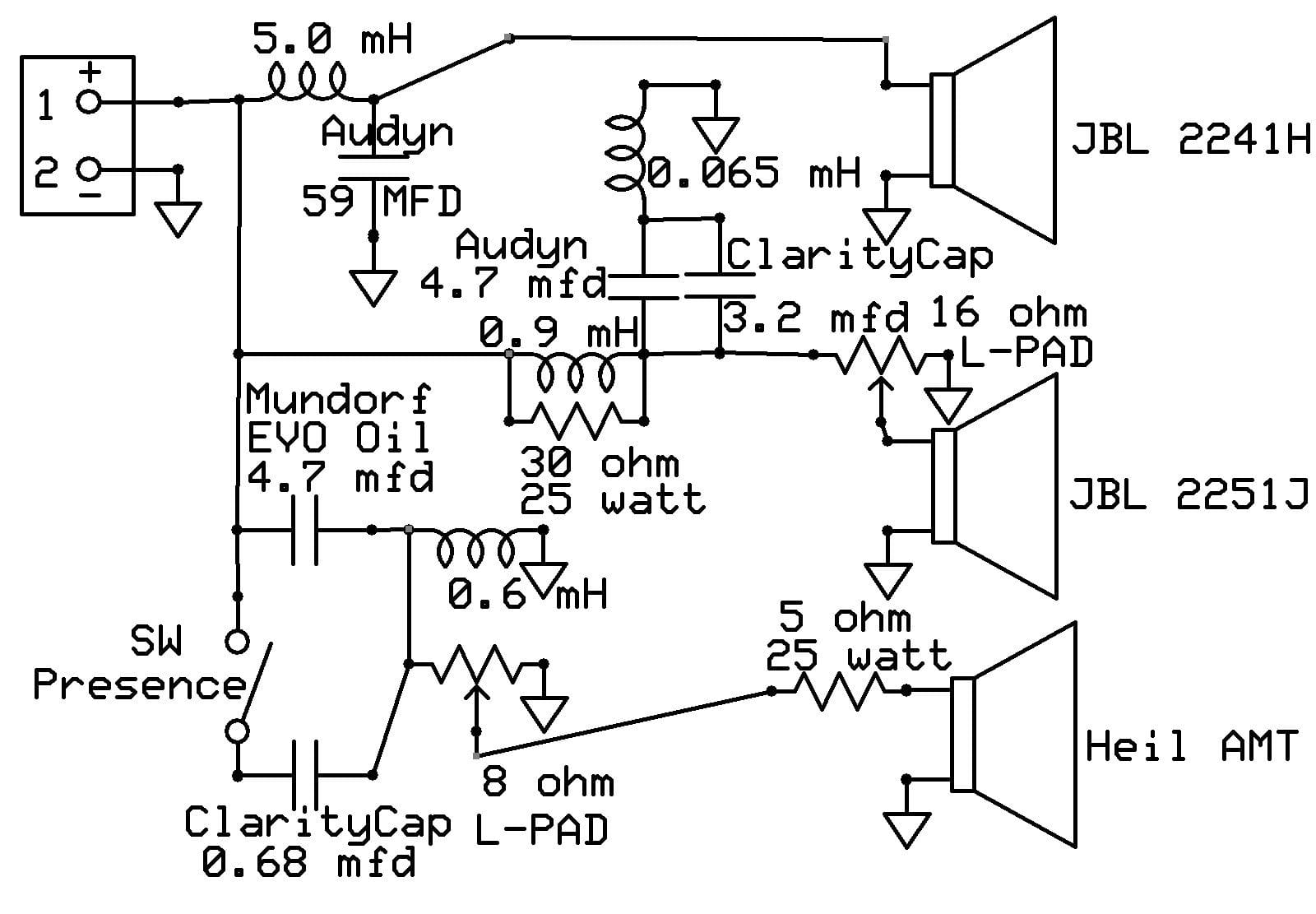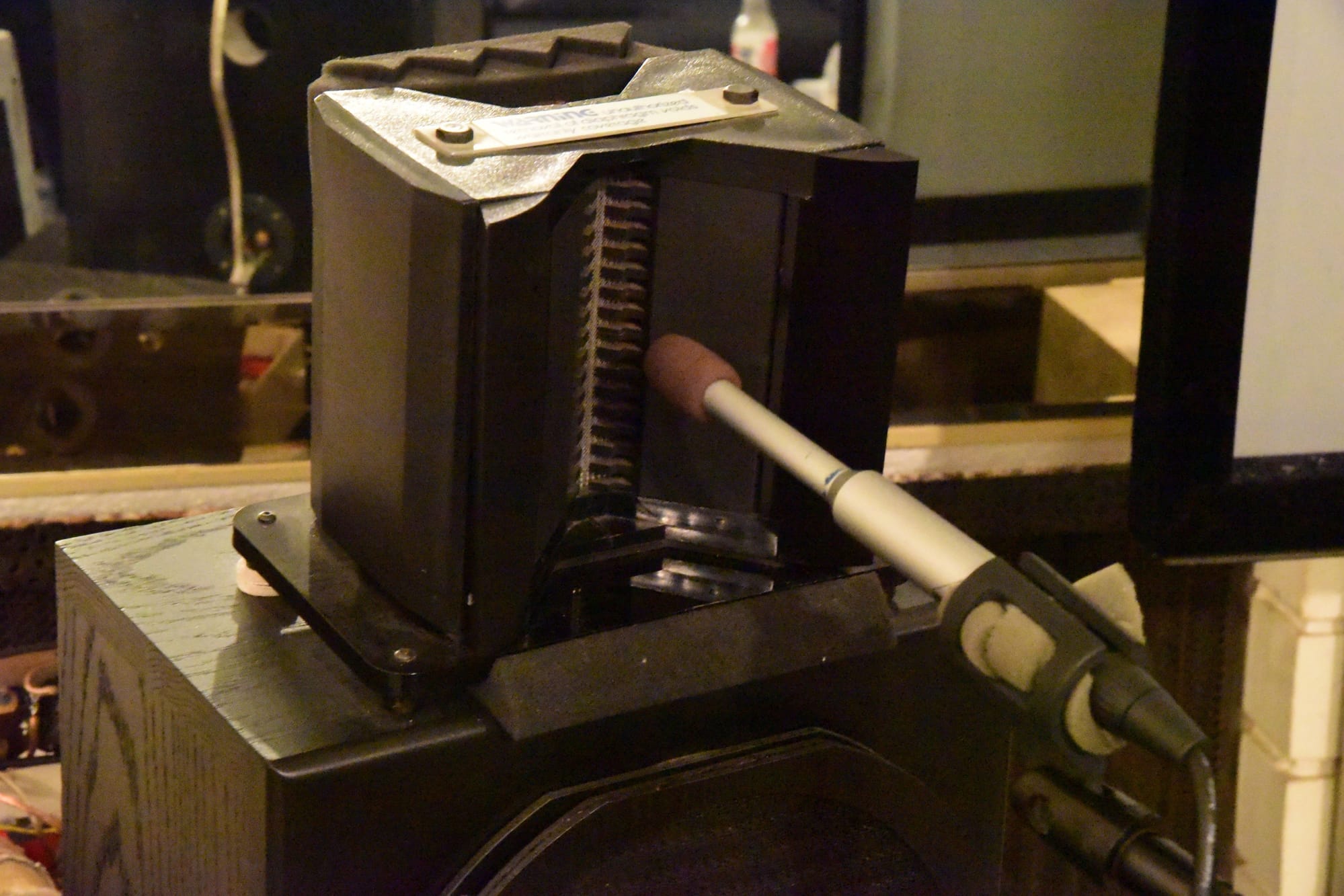My thought is that for the most coherent vocal presentation, it makes sense to keep the vocals in one speaker rather than spread them across a few drivers. And I never wanted to replace surround foams.
The 2251J is a very special ~9.5" driver that plays very well, way above the region I cross them over at and this allows the fundamentals to all be portrayed from a single source. They use dual 3" voice coils in a differential drive system with neodynium magnets and will take 400 watts RMS all day long. AND, the cones are light and use an accordion, rather than foam, edge. JBL actually used these in a horn enclosure.
Of course there is no free lunch, and the 2251Js roll off significally below 300 Hz which is why I run them as a 2.5-way augmented by a JBL 2241H 18". These also have an accordion edge. I am of the belief that the accordion edge presents a more textured, realistic bass guitar. Also, if you see a bass player playing/recorded through an 18" speaker, there is a pretty good chance that it may be a JBL 2241.
The dispersion on the 2251s may suffer a bit at the upper end, but it makes little difference because I always listen alone in the sweet spot. In fact, by limiting horizontal dispersion, I also limit side bounce and the soundstage and imaging are so real its unreal.
I, and others, have found that soundstage and imaging of the Heil are increased/bettered by blocking off the rear rather than letting this signal bounce willy-nilly about the room. But you need to be careful what and where you place things back there because it can cause good or bad reflections at the diaphragm.
The natural gently rising slope of the Heil may blend well with a woofer that has a gently declining slope, but the 2251J gets brighter above 3kHz very quickly and I augment the slope by increasing roll off a bit.
This then would leave a depression in the crossover area, but I modify the Heils by adding rear half-rounds that totally change their slopes by orders of magnitude.
In fact, with the addition of the half rounds, the actual slopes remain relatively the same even if you were to use a 1st order crossover down at 800 Hz (not recommended BTW). I also add curved flairs to their fronts for a smoother exit transition.
I know..., it don't mean a thing without pictures.
Heil crossed over at ~3kHz without half-round behind:
And with half-round behind:
Actually, the placement of the half-round is fairly critical and since these were taken, the Audyn Q4 cap was changed to a Mundorf EVO Oil and adjustments to the placement of the half-round make the plateau even flatter. This added area under the curve is where the real detail lies!



